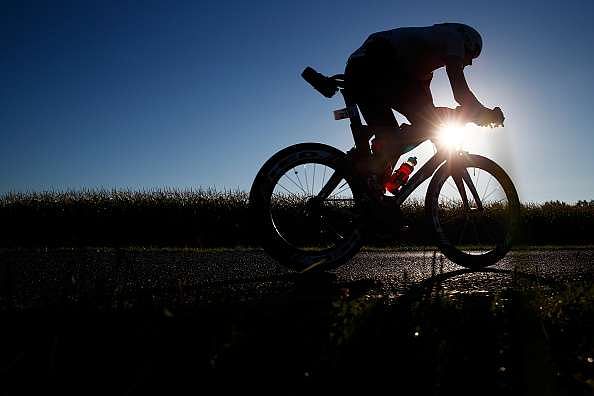
Cycling: The big deal about Power Training
The body of research on training and exercise physiology has taught us that to get better at an endurance sport (cycling, running, swimming, etc.) one needs to bring variation in training. While doing the same thing over and over again can bring in improvements initially, it is a recipe for an eventual plateau in your fitness and performance. For instance, if you are a beginner cyclist and you start riding 30km every single day for a year (not advisable, just for the sake of example), it will make you better at riding the distance of 30km initially.
You will surely see a tremendous spike in your cycling performance but this is not the way to bring out the best in you. To bring out your best, you need to “overload” the body and all its systems by varying the duration and difficulty from time to time. The smarter and only effective way to go about it is to vary the volume (duration) and intensity (difficulty) and plan your training in blocks by manipulating these two factors. Plans using this rule of thumb can be made in the range of micro blocks – a span of a week or fortnight – or macro blocks – a span of a few months.
Of course, there are ways to supplement your plan with weight training, balance training, meditation, visualization, etc. but we will focus on the main method i.e. training with the sport you are training for. If you want to get better at running, you should run. If you want to get better at riding a bike, you should spend most of your time riding the bike.
Training with Distance/Speed
Distance is an indicator of volume of training but time is even better. I could be riding 50km downhill and finish it in 1 hour but the same 50km would take more than 3 hours if I went uphill instead. The human body doesn’t know kilometers, it knows time.
Similarly, speed is an indicator of the intensity of training, but only a rough indicator. If two people rode a distance of 50km at speeds of 20kmph and 30kmph, it’s natural to think that the guy who rode 30kmph trained at a higher intensity.
But, this assumes that these two had identical conditions. The faster guy may have been riding downhill while the slower guy may have been riding against a terrible storm. Their bikes may have been completely different, with one riding a heavy doodhwala cycle and the other riding a light as a feather pro bike. Their physical fitness could be at the ends of the spectrum. So you can now see that using speed as a training prescription has flaws.
Training with Heart Rate
A less subjective approach to specifying training plans is to use heart rate. Firstly, this needs an investment in a device that measures heart rate because measuring your heart rate by feeling your pulse with your fingers is cumbersome/dangerous if you want to take your hands off the handlebars and there is enough room (up to 2BHK) for a human error in counting.
Secondly, heart rate straps are not all of the same accuracy. Thirdly, some devices fail more often than others. Next, heart rate is subjective and personal. My heart could be beating at 100 bpm (beats per minute) without me breaking into a sweat while my grandfather's body would be screaming for a break at the same figure.
There are inter-individual differences. Therefore, it's common practice to prescribe training plans as a % of maximum value of heart rate (or of certain “threshold” values of heart rate). So, if I asked two people to ride their bike for 60mins at 70% of their max heart rate, to some extent, this normalizes the intensity. This could be a fair way to go about planning your training.
But, if I drank too much coffee, or haven't slept enough, or downed a few beers before training, my heart rate values would shoot up for the same intensity I may have done under different conditions. Anxiety, emotion, “fight or flight” instincts all have an effect on heart rate patterns. Which means even heart rate is flawed.
Training with RPE
RPE or Rate of Perceived Exertion/Effort sounds wrong in the name itself. This says that you use the subjective marker in your mind to rate how hard or easy you have to go. I could tell you to train tomorrow at an intensity of 8/10 for 30mins where 8 falls in a scale of 1 to 10 – 1 being a beach cruiser pace and 10 being you sprinting for your life up the steepest hill while being chased by a pack of wolves.
As you can imagine, this largely depends on mood and mental/physical fatigue. Today’s 8 might feel as hard as tomorrow’s 8 but in terms of performance, I could be miles off. This cannot be a reliable way to plan my training either.
Training with Power
In an age where people want to work smarter and not necessarily grind away aimlessly, power training is the modern cyclist's most scientific bet. Power is the rate of doing work. It is a 100% objective way to quantify training load. Unlike heart rate monitors, a power meter measures output and not input. A power meter measures the power that a cyclist produces while being blind to external conditions (weather, terrain, mood, mental/physical fatigue, good/bad equipment, etc.).
If I am cycling at a power output of 200 Watts (W) today and I cycle at 200 W two weeks from now, my output is the same irrespective of everything else. One day might "feel” harder than the other, one day might justifiably be more challenging than the other, but my performance is undeniably 200 W. On the other hand, if I were to ride at 150 bpm on two different days, the output may be completely different. Sure, the load you put on your heart could be argued to be the same on both occasions, but the load you put on the muscular and neurological system may not be the same.
A cyclist riding up a steep hill at 300 W might be trodding along at a measly 15kmph while somebody else riding on a flat road could be steaming ahead at 35kmph for the same power output. But we know that they are both loading their body to produce the same output of 300 W. Before I put forward another redundant example, I will stop.
If you’re a cyclist and have even touched the surface of training, you are no stranger to power meters and training with power. You are also aware that the only reason you haven’t got one yourself is the prohibitive price tags.

